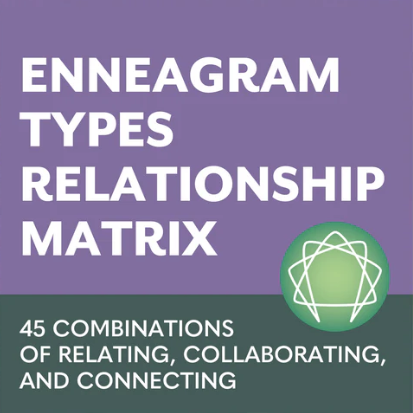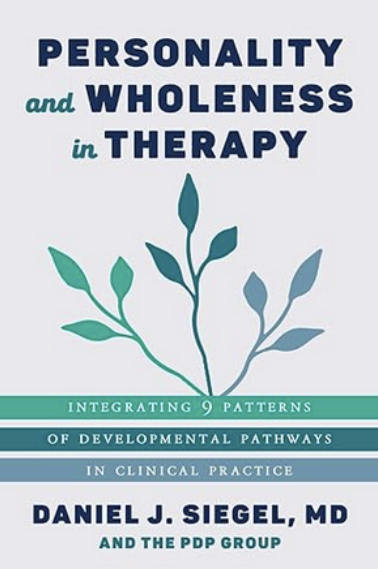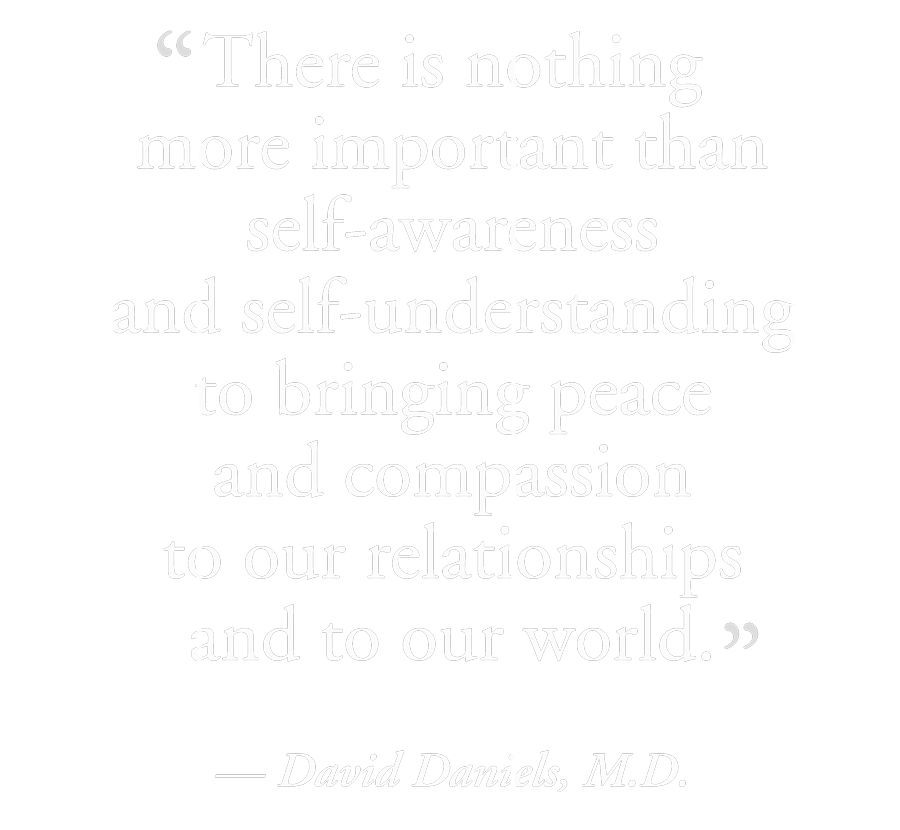SYNOPSIS OF ARTICLE: What we’ve come to call the “Narrative Tradition” is a method of both learning and teaching that is based on each of the nine personality type speaking for themselves. It’s a philosophy wherein we individually contribute our own self-knowledge and personal path to becoming integrated beings. The Narrative Tradition relies on in-depth panels of exemplars, interviews, and small group processes.
Below I provide the history and incredible richness of this fundamental method. In addition, I make a statement advocating the importance of typing the self from the inside out. The discovery and declaration of our own types structure is the first step in self-development. The Enneagram is about the internal structure of reality, not just the identification of external behavior and characteristics.
The Narrative Tradition of the Enneagram
Typing the Self from the Inside Out
by David Daniels, M.D.
Brief History of the Narrative Tradition
Helen Palmer along with others in Berkeley, California began conducting panel interviewing of the nine Enneagram personality types in the 1970s. This method, coined “the Narrative Tradition,” quickly became a powerful and effective teaching method. It’s one thing to read theory and concepts presented in a book. It’s another to witness a personality type speak for itself. She and I [1] have been teaching the Enneagram using the Narrative Tradition method in our Enneagram Professional Training Program (EPTP) since 1988, the year we established the first Enneagram training program. Our goal was to put standards in place for this work. In this way, panels of speakers of the types reveal their inner worlds and realities publicly. Each individual participant teaches the rest of us in a manner that no didactic method ever could. Our organization, THE NARRATIVE ENNEAGRAM (TNE), is now in several countries worldwide and has been growing year by year. Many people and teachers know it as the Palmer-Daniels Enneagram Training Program.
The Value of the Narrative Tradition
The Narrative Tradition’s inquiry method whether on panels, small group exercises, or individual interviewing elucidates each type’s struggles, dilemmas, strengths, basic structure, and paths of development. The grass roots philosophy of self-discovery and self-expression fundamental to the ultimate goal of self-development is embedded in this approach. The types continuously teach us about themselves at ever deepening levels of awareness, and we learn from exploring with them. The panel method recognizes that type is based on the internal structure of reality, which implicitly is largely non-cognitive and outside of awareness until we “wake up,” thanks to the development of self-observation and inquiry. In addition, this method in no way demeans either the written word or explicit cognitive learning, both of which heighten clarity, facilitate discussion, and are readily disseminated. Thus, the Enneagram ultimately is an “inside job” of coming to know your own attentional style and basic motivation behind perceptions and behaviors. The system is not primarily about external behavior, but rather about how behavior relates to attentional style, motivation, and spiritual experience. In our view, there is no better way to explore, learn, and teach than through the Narrative Tradition’s interactive method.
What the Narrative Tradition Is Not
Acceptance and understanding often come from appreciating what something is not. The Narrative Tradition of teaching is not about history per se, yet each person of each type has their own history. Nor does the term refer to ancient roots or transmission. Furthermore, there is no spiritual leader and no specific lineage attached to this teaching except its philosophy of grass roots sharing, witnessing, and self-discovery. In fact, the tradition of the types speaking for themselves democratizes learning and demands virtually equal responsibility on the part of students and teachers alike. Lastly, the panel method of inquiry in no way claims to be an oracle that receives any special knowledge that is not available to any dedicated students of the psychological and spiritual realms.
Why Is “Enneagram Typing” from the Inside Out?
In my opinion, typing individuals as well as the attempts made to type celebrities, politicians, historical figures, and cultures violates the basic premises of the Narrative Tradition philosophy. Typing is best accomplished when an inside job. Typing is the result of inquiry leading to self-discovery and in turn, self-development.
Why? Because the first step in self-development is self-discovery, the ability to discern one’s type through inner inquiry. We teach the facilitation of this inquiry process to aid the self-discovery process. This is core to our teachings and basic premise. Even if I felt I could type someone from the outside with 90-percent accuracy, I would prefer not to do this. The value of “typing” is in the self-discovery of our own inner workings and of our own habit of mind.
Why? Because we teach that each of us has the potential to contribute to our self-knowledge and expertise. This is core to the Narrative Tradition. The types are best represented when speaking for themselves.
Why? Because the Enneagram system shows us that our personality so powerfully determines our lives, our point of view, our biases, and our paths of development. It shows us that we need to be careful and thoughtful so as to not arbitrarily lay a type on somebody else before they’ve had a chance to encounter themselves.
Why? Because the types are archetypes that we need to respect and honor. The Narrative Tradition is about honoring the typing process as something to be done from the inside out, and not from the outside in.
Why? Because we non-consciously apply our own type bias, often resulting in over-diagnosing our own type. Remember that believing is seeing, not seeing is believing. There is in fact a huge error rate in typing others from the outside.
Why? Because as Anna Murphy Paul points out in The Cult of Personality, personality typologies have failed to be predicative because they rely on external characteristics.
Thus to me, the typing of celebrities, politicians, historical figures, and cultures is simply a parlor game. Yes, it’s enjoyable, fun, thought provoking, and engaging. I urge us all to remember this when we engage in the “typing from the outside” temptation. This awareness also embodies us with healthy humility.
In Summary
The Narrative Tradition method and philosophy is so at the heart of our work that our organization’s name, Enneagram Studies in the Narrative Tradition (ESNT), now reflects it directly. In addition, we are now an official 501c3 non-profit corporation and have become so in order to fully manifest our longer-term goals. We honor and respect all those who have studied with us and thank each and every one for their many contributions.
We know that as each of us shares our wisdom and knowledge, the whole becomes much greater than the sum of its parts. And lastly, this philosophy puts us all on the path to becoming more integrated, self-aware human beings.






